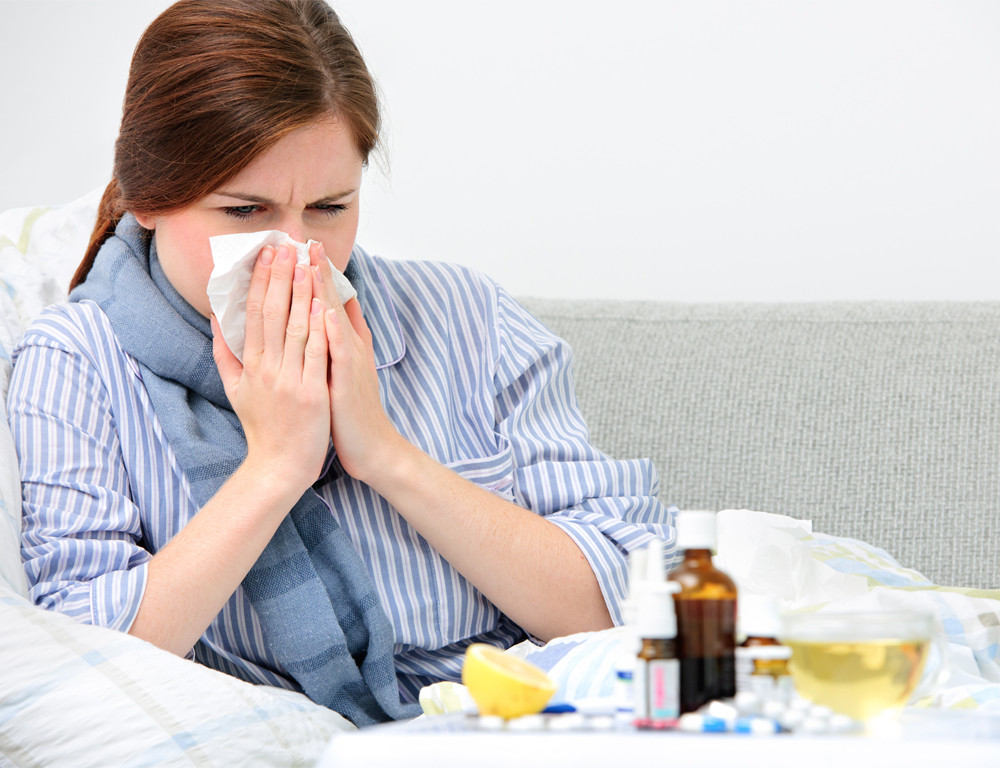Definition
In medical terms, "rhino" refers to the nose, while "sinus" refers to small cavities connected by airways within the skull bones. The paranasal sinuses are the sinuses located around the nose. There are four paranasal sinuses: the frontal, maxillary, ethmoid, and sphenoid sinuses. The functions of the sinuses include warming or humidifying inhaled air, helping regulate pressure in the nose, defending the body, lightening the skull, and providing resonance to the voice. The symptoms of sinusitis can vary depending on which sinus is affected.
Rhinosinusitis is inflammation of the mucous membrane lining the nasal cavity and paranasal sinuses. The term rhinosinusitis is preferred over just sinusitis because inflammation of the sinus cavities almost always occurs alongside nasal cavity inflammation. Rhinosinusitis can negatively impact a person's quality of life, increase healthcare costs due to needed medications and surgeries, and reduce patient productivity.
Rhinosinusitis is classified based on the duration of symptoms and the inflammation that occurs.
- Acute Rhinosinusitis: Symptoms last for less than 12 weeks. This type is further divided into:
- Viral Rhinosinusitis
- Bacterial Rhinosinusitis
- Recurrent Acute Rhinosinusitis: Four or more episodes of acute bacterial rhinosinusitis occur within one year.
- Chronic Rhinosinusitis: Symptoms persist for more than 12 weeks despite treatment.
Causes
Most acute rhinosinusitis is caused by viruses and can resolve on its own. Acute rhinosinusitis typically follows an upper respiratory tract infection.
The most common bacterial causes of rhinosinusitis are Streptococcus pneumoniae, Haemophilus influenzae, and Moraxella catarrhalis.
ny condition that blocks the mucus flow from the sinuses to the nasal cavity can cause rhinosinusitis. Examples include:
- Structural abnormalities such as polyps or tumors in the nasal cavity
- Colds or flu from allergies or infections
- Foreign objects in the nasal cavity (common in children)
- Incomplete treatment of upper respiratory infections
- Cavities in upper teeth
- Air pollution
Risk factor
Certain individuals are at higher risk of developing rhinosinusitis, including those with:
- Immune system disorders, such as diabetes, HIV/AIDS, cancer, those taking immunosuppressive drugs like corticosteroids, and post-organ transplant patients
- Allergic rhinitis. Although no studies have confirmed a direct link between allergic rhinitis and rhinosinusitis, the two conditions often occur together. Individuals with allergic rhinitis are more susceptible to chronic rhinosinusitis.
- Asthma, which often coexists with chronic and recurrent rhinosinusitis
- Cystic fibrosis, with nearly all sufferers also experiencing rhinosinusitis
- Gastroesophageal reflux disease (GERD)
Symptoms
Inflammation and swelling of the sinus cavities disrupt mucus flow, leading to mucus accumulation and various symptoms. Common symptoms of rhinosinusitis include:
- Nasal congestion
- Facial pain
- Fever
- Yellow or green nasal discharge
- Postnasal drip (mucus in the throat)
- Headache
- Tooth pain. The roots of upper molars are near the maxillary sinuses, so inflammation of these sinuses can be perceived as tooth pain.
- Cough
- Ear pain/pressure/fullness
- Bad breath, often due to bacterial sinus infection
Acute bacterial rhinosinusitis can present with fever, severe pain, fatigue, loss or reduction of smell, and a sensation of fullness or pressure in the ears. Bacterial causes often result in symptoms localized to one side of the face, such as unilateral nasal congestion or discharge.
Symptoms can also correlate with the affected sinus:
- Cheek and eyelid swelling and pain (maxillary sinusitis)
- Forehead and upper eyelid swelling and pain (frontal sinusitis)
- Swelling and pain behind or between the eyes (ethmoid sinusitis)
- Pain behind the head (sphenoid sinusitis)
Diagnosis
To diagnose rhinosinusitis, a doctor will typically inquire about your medical history and perform a physical examination. However, in cases where complications are suspected, additional tests may be required, such as transillumination, paranasal sinus X-rays, CT scans, sinoscopy, and microbiological examinations. CT scans are generally used to confirm inflammation in the sinuses and nasal cavities objectively and to distinguish rhinosinusitis from other conditions with similar symptoms, such as allergic rhinitis and facial pain.
Management
Acute viral rhinosinusitis usually resolves on its own within 7 to 10 days with over-the-counter cold medications. Treatment options for rhinosinusitis include:
- Symptom relief medications such as:
- Decongestants to relieve nasal congestion. These should not be used for more than 3-4 consecutive days to avoid rebound congestion.
- Nasal sprays containing ipratropium bromide to reduce runny nose symptoms associated with viral rhinosinusitis. Use cautiously in the elderly.
- Nasal steroid sprays for mild to moderate rhinosinusitis symptoms. Generally well-tolerated with minimal side effects.
- Short-term oral steroids for chronic rhinosinusitis with nasal polyps to shrink polyps and reduce inflammation. Oral steroids have more side effects than nasal sprays.
- Pain relievers for facial pain
- Antibiotics for bacterial infections, based on rhinosinusitis treatment guidelines, if symptoms do not improve within 7-10 days or worsen, or if complications arise such as redness or swelling around the eyes. Preferred antibiotics include amoxicillin or amoxicillin/clavulanate.
- Nasal irrigation with saline solution
- Physiotherapy with short-wave diathermy
- Surgery: Indicated for complications involving the brain or abscess formation around the eyes
Complications
Although rhinosinusitis usually resolves on its own, serious complications can occur, some potentially life-threatening. Untreated or prolonged rhinosinusitis can lead to brain infections, infections around the eyes causing vision problems, infections of the bones around the sinuses, facial deformities (protrusions or swelling), and recurrent throat inflammation. Additionally, untreated rhinosinusitis can lead to permanent loss of the sense of smell.
Prevention
Preventive measures include:
- Avoiding triggers such as cavities, colds (allergic or infectious), foreign objects, and smoke exposure
- Managing allergies effectively by:
- Avoiding allergens like dust mites, dust, smoke, pollen, and animal dander
- Maintaining a healthy lifestyle with a nutritious diet, regular exercise, and no smoking
- Treating allergies
When to see a doctor?
Most cases of rhinosinusitis can be managed without seeing a doctor. However, you should consult a doctor if:
- Symptoms persist for more than a week
- Symptoms worsen after initial improvement
- Fever does not subside
- There is a history of chronic or recurrent rhinosinusitis
Immediate medical attention is needed if there are symptoms indicative of a serious infection, such as:
- Pain, swelling, or redness around the eyes
- High fever
- Confusion or decreased consciousness
- Double vision or other vision problems
- Stiff neck
If you experience a sudden loss of smell, consider it a potential COVID-19 symptom and get an antigen or PCR test, then self-isolate until you receive a negative result.
- dr. Yuliana Inosensia
Rhinosinusitis: Synopsis | World Allergy Organization. Worldallergy.org. (2022). Retrieved 25 February 2022, from https://www.worldallergy.org/education-and-programs/education/allergic-disease-resource-center/professionals/rhinosinusitis-synopsis.
Rhinosinusitis: symptoms, diagnosis and management in community pharmacy - The Pharmaceutical Journal. The Pharmaceutical Journal. (2022). Retrieved 25 February 2022, from https://pharmaceutical-journal.com/article/ld/rhinosinusitis-symptoms-diagnosis-and-management-in-community-pharmacy.
Acute sinusitis - Symptoms and causes. Mayo Clinic. (2022). Retrieved 25 February 2022, from https://www.mayoclinic.org/diseases-conditions/acute-sinusitis/symptoms-causes/syc-20351671











